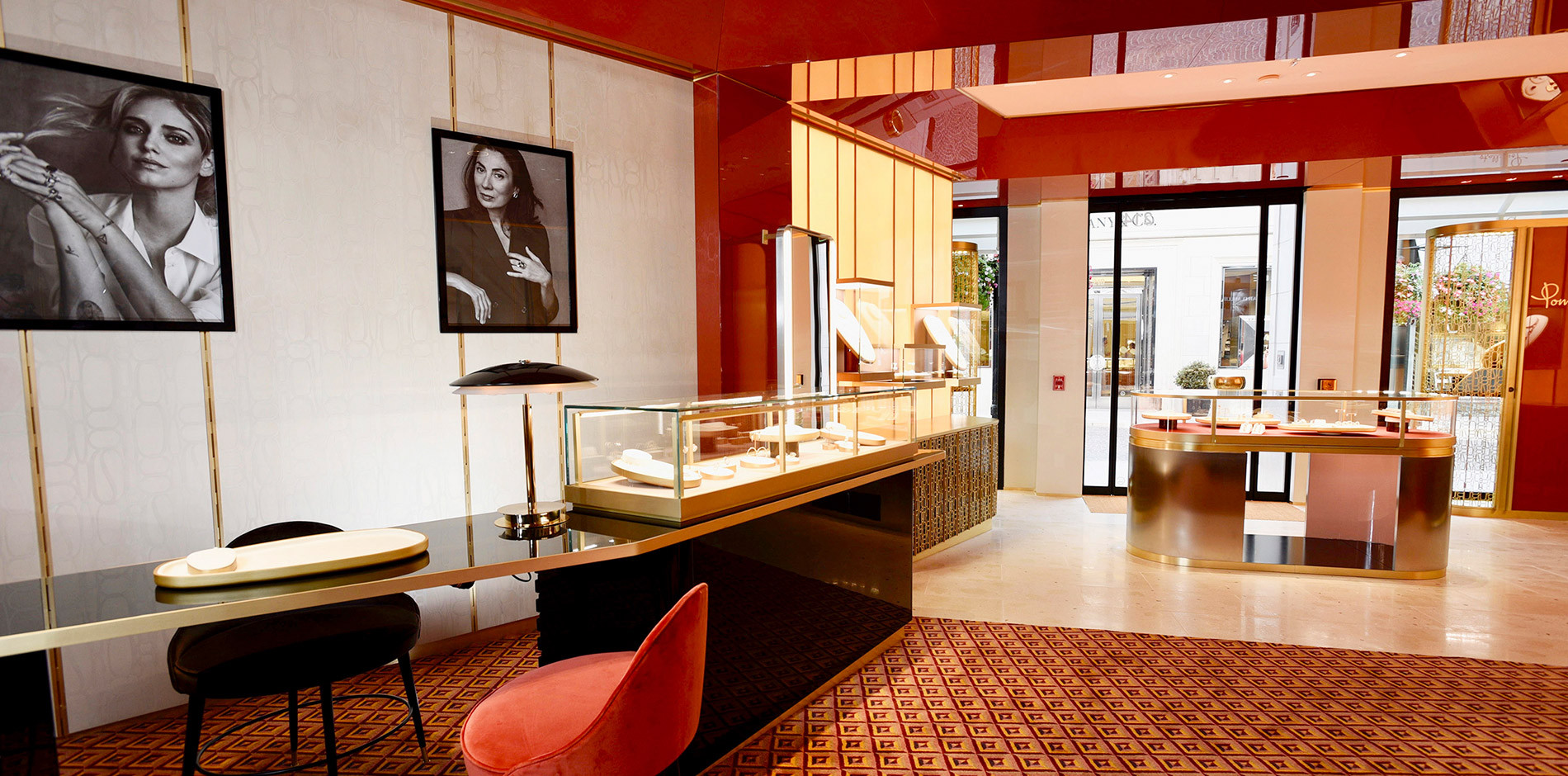Photo courtesy of Pomellato
This month, we caught up with our International Retail Consultant, Bahjat Talhouni, to get his insight on construction trends throughout Europe and the U.S. With more than 20 years of experience in the industry, speaking four languages, and working with clients on projects in the United States, Europe, Middle East, and Asia, he successfully helps European clients get started with building their stores in the U.S.
1. What do you find is key to the success of a project?
Key to navigating projects successfully is constant communication and collaboration with the client from the outset. Communication can have its nuances, especially with international clients, so the ability to discuss matters in person with clients and their partners—at their home base and in their language—makes a significant difference in moving things forward.
2. What are some key considerations that brands should take into account when planning an expansion into the U.S.?
The building process in the U.S. is fundamentally different than in Europe. The U.S. market’s economic characteristics, scale, and systemic protocols between project stakeholders (i.e. owner-architect-CM/general contractor), make for rather different expectations and larger budgetary numbers in the U.S. It quickly becomes evident that creating a physical presence in the U.S. can become more costly than expected due to general logistical and regulatory aspects.
In Europe the architect can commonly act as a construction/project manager, but in the U.S. those roles are distinctly separated and specialized. Innovation and value engineering are at the core of optimizing costs, so it is important to point out that the earlier the construction manager is brought on board to help plan the project with the client and/or architect, the better the project execution will be in terms of cost and schedule.
Teams should explore key budget, constructability, and schedule considerations including local vs. international procurement, and agree on how to tackle potential “in-project” changes effectively to minimize additional costs (i.e. change orders).
3. Are there any specific offerings in Europe and/or the UK that you foresee making their way to the U.S.?
My predictions are that the offerings will be based in food, sleep, and beauty:
- High-end supermarkets – The onset of high-end supermarkets such as those in Paris (La Grande Épicerie) and London (Harvey Nichols, Harrod’s) is very slow to arrive in the U.S. Eataly is an encouraging debut, but there is so much more opportunity—even classic retailers are integrating food & beverage concepts into their spaces.
- Community-focused hotels – The debut of UK hotel brands—including The Hoxton and Soho Warehouse in Downtown Los Angeles—is indicative of the fact that hotels with strong concepts addressing the need for community and socialization is very compelling.
- Beauty & cosmetics – Skincare is experiencing a particularly strong growth rate across a spectrum of price-points and products. Both prestige and newer brands will look to capitalize on this large and growing market.
4. Why is opening a physical store still so important for retail brands?
A physical retail store helps provide a fully immersive experience where the brand can most effectively display its products and tell its story to develop loyalty among consumers. An interesting and increasingly used format is the pop-up shop—brands can advertise globally through social media and measure visual impact with physical spaces, all while driving sales.
5. What are some up-and-coming locations or types of developments you see retailers moving to?
You will see an increasing demand for lifestyle destinations—places where people can shop, eat, play, and live.
- NYC’s Hudson Yards brings together retail, corporate, hospitality, art, and leisure; transforming formerly dormant space into a thriving community
- Miami’s Brickell City Centre and Design District are being developed to create communities for artists, designers, and creators of all sorts; providing a hybrid of both retail and gathering spaces.
- Chicago’s West Loop/Fulton Market area has a budding restaurant scene and will grow into an increasingly vibrant area now that corporate titans such as McDonald’s and Google have established offices there.
- Los Angeles’s Downtown is benefiting from a surge in major investment, and the Arts District is emerging as a West Coast version of NYC’s Soho or Meatpacking district.
